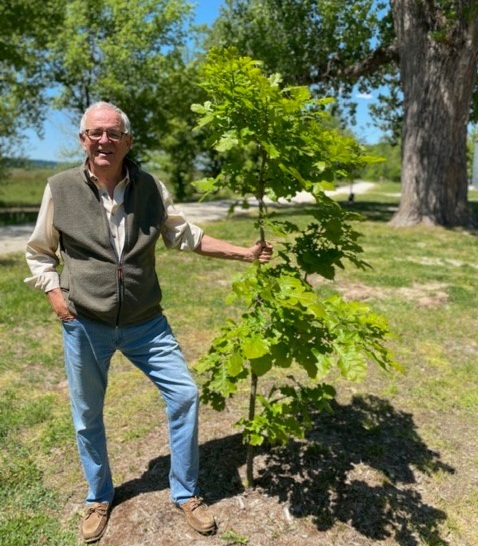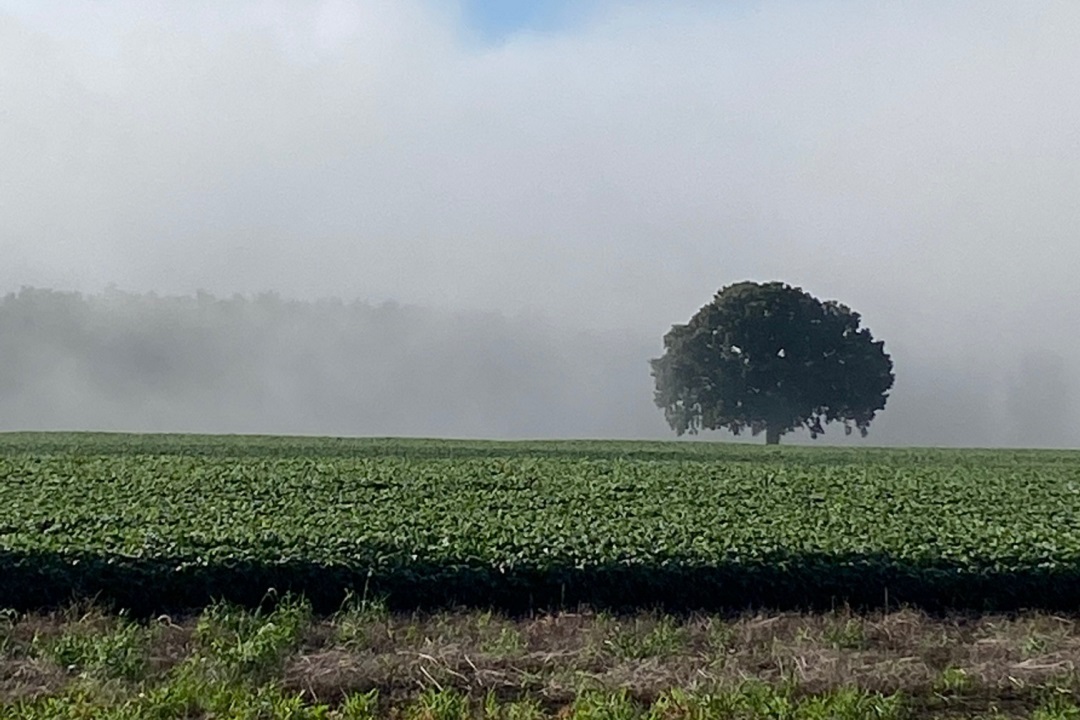“The best time to plant a tree was 20 years ago,” says a Chinese proverb. “The second best time is now.” Dan Burkhardt could not agree more. The local conservationist and co-founder of Magnificent Missouri envisioned a tree-planting program that is now taking root along the Katy Trail.
The three-year initiative — a collaboration between Magnificent Missouri and Forest ReLeaf of Missouri — will help restore a hint of the forest that once flourished in the Missouri River bottom.
The program officially kicked off in fall of 2020. At the Trees of Treloar event, volunteers planted an arboretum to showcase a variety of native species, such as bur oak, Kentucky coffeetree, American smoketree, and sassafras. The site will help educate visitors about native trees they might see along the Katy Trail.
To commemorate the launch of the initiative, Burkhardt arranged for a special printing of The Man Who Planted Trees, a beloved French fable that inspired this modern-day mission in Missouri.
“The Man Who Planted Trees helped to spur the idea of tree planting for me. The book is about how one person transformed a barren, desolate land into a beautiful, productive, interesting place to live,” said Burkhardt, who wrote the foreword for the special edition.
Following the Trees of Treloar kick-off event, in March 2021 dozens of volunteers pitched in to plant 50 saplings along the Katy Trail. Plantings will take place in spring and fall each year of the three-year program.

Dan Burkhardt with newly planted tree.
“We are working with State Parks to identify locations along the Katy Trail that are good for native species. Our goal is to plant thousands of trees over the course of the program,” said Burkhardt. “Along the trail, we are planting smaller trees to minimize the need to water. We’ll be able to watch them grow in the coming years. Patience is a real virtue when it comes to trees.”
Beyond their beauty — and the shade they will provide to bicyclists on hot summer days — the new trees will help sustain area wildlife.
“Most of our native trees provide homes, food, and nesting places for various pollinators, birds, and other critters in the countryside. They are beautiful to look at and very valuable for biodiversity,” said Burkhardt.
Plantings include an array of native species. Large shade trees like the oaks will take root, as will fruiting trees, from the serviceberry to pawpaw. The latter produces a fruit known as the “poor man’s banana,” which helped to sustain Lewis and Clark in their travels through the area.
“This project will connect people to how the early settlers and Native Americans used native river bottom trees. It makes the experience on the Katy Trail a lot more meaningful and fun when people understand what they’re seeing and the history of the area,” said Burkhardt. “The Katy Trail is a unique asset that needs to be valued, treasured, and improved upon. The more people understand about where they live and play, the more apt they are to protect it. People conserve what they love.”
Burkhardt is living proof of that. Having grown up on a wooded farm in Michigan, where nature was often discussed around the dinner table, the conservationist has a heart for the outdoors, trees in particular. He counts the bur oak among his favorites.
“The bur oak is one of the biggest, grandest trees. They can live for 350 years. When you’re out on the trail and see one of those giant old bur oaks out in the river bottom, you know it was there when Lewis and Clark came through, and it was probably a pretty big tree even then,” he said. “They are such spectacular trees. We are going to plant a lot of bur oaks.”
Along the way, Burkhardt hopes to plant the seeds of conservation in the minds of visitors to the Katy Trail.
“The idea is to engage people. The Katy Trail is 240 miles long — there is a lot of room out there for trees to be planted,” he said. “Hopefully, this program will provide inspiration for others to plant trees in their own yards, neighborhoods, parks, and along local trails as well. I hope this is just the beginning.”
Lend a Hand
Want to help keep Missouri magnificent? Visit MagnificentMissouri.org and sign up for an email newsletter that will alert you to volunteer opportunities, including tree planting, trail clean-ups, and invasive species clearing.
Author: Celeste Huttes is a contributor to Terrain Magazine.
Top Image: Mature bur oak visible from the Katy Trail between Defiance and Augusta, Mo.


Leave A Comment